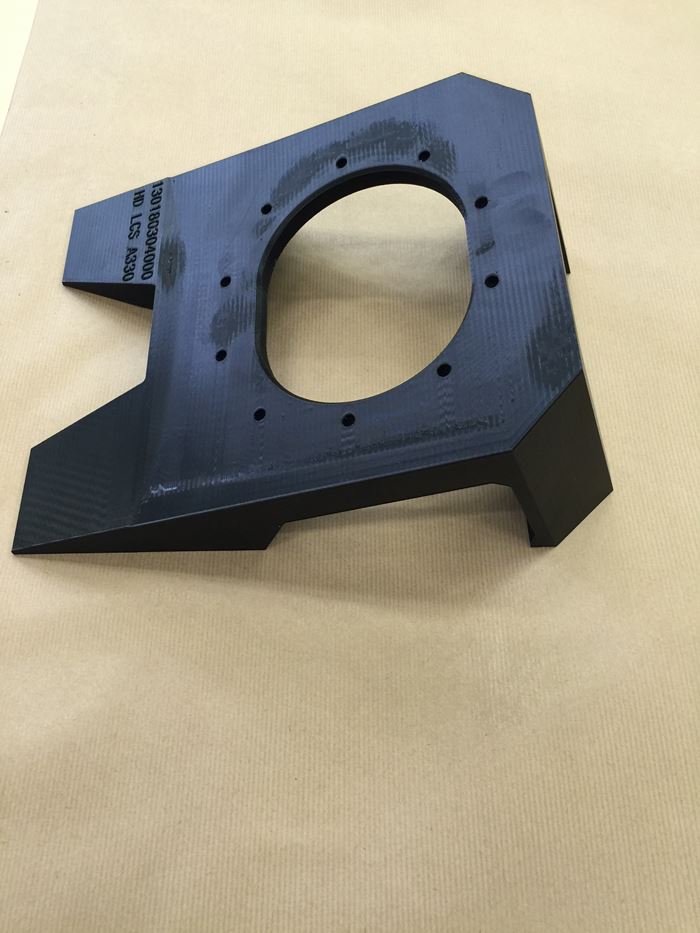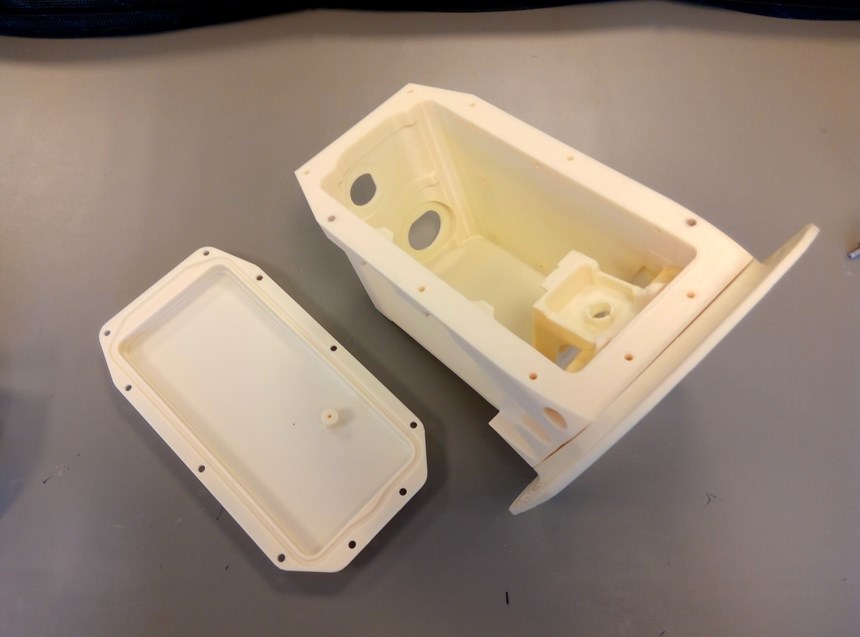3D printing helps Latécoère cut lead times
Latécoère is deploying Stratasys FDM additive manufacturing throughout its design and production process.
French aircraft design and manufacturing group Latécoère is deploying Stratasys FDM additive manufacturing throughout its design and production process. Latécoère – which services aerospace giants including Airbus, Bombardier and Dassault – is using its Stratasys Fortus 450mc Production 3D Printer for both rapid prototyping and production tooling. According to Simon Rieu, composite and additive manufacturing manager at Latécoère’s R&D and Innovation Center, the adoption of this technology has been transformational for both design and manufacturing.
“Additive manufacturing has integrated seamlessly into our design and production process, and has seen us enjoy improved lead-times, reduced costs and enhanced operational efficiency,” he says. “As the requirements of the aerospace industry become more demanding, we’re also mindful of the need to maintain our competitive edge, and Stratasys additive manufacturing enables us to meet that objective.”
Traditionally, the company uses CNC machining for rapid prototyping, but this has presented limitations. “We recently produced a 3D printed prototype to verify the fit and function of a part for the interior lining of an aircraft door,” says Rieu. “Previously, this would have been made from sheet metal – an often-time-consuming process. With our Fortus 450mc 3D Printer, we produced a fully-functional prototype in two days, reducing our lead times by a staggering 95%. Crucially this has accelerated our design validation process before committing to costly and time-consuming tooling.”
Latécoère recently 3D printed a prototype camera case for the Airbus A380 aircraft for design validation with the camera’s internal parts housed inside. Prior to Stratasys FDM 3D additive manufacturing, the team would have been forced to directly manufacture an aluminum camera case for testing, with any design iterations proving costly. Using ULTEM 9085 material, the 3D printed prototype is also 50% lighter than its metal counterpart, enabling more efficient functional part testing.
The company is also utilizing its Fortus 450mc 3D Printer for the on-demand manufacture of customized production tools. This has not only seen significant reductions in time and cost, but also enhanced operator efficiency.
“Using metal sheet manufacturing, creating a tool can take up to six weeks. Now we can 3D print a tool in just two days and 50% lighter using ULTEM 9085 material,” says Rieu. “With our 3D printer, we can also optimize the geometry of the tool to perfectly fit the part – making the operator’s job much easier. Not only has this accelerated our production process dramatically, but I also estimate that we’ve reduced our tool production costs by a massive 40%.”
Looking ahead, Latécoère’s long-term strategy is to 3D print final production parts for next generation airplanes from the likes of Airbus, Boeing, and other leading aircraft manufacturers. The company has already begun exploring the potential to utilize its Fortus 450mc to produce final interior aircraft parts with certification in mind. Using Stratasys’ tough, lightweight and FST compliant ULTEM 9085 material, the team has 3D printed various air duct housing components, which has seen significant weight reductions and time savings compared to traditional production methods.
Related Content
-
Plant tour: Spirit AeroSystems, Belfast, Northern Ireland, U.K.
Purpose-built facility employs resin transfer infusion (RTI) and assembly technology to manufacture today’s composite A220 wings, and prepares for future new programs and production ramp-ups.
-
Plant tour: Albany Engineered Composites, Rochester, N.H., U.S.
Efficient, high-quality, well-controlled composites manufacturing at volume is the mantra for this 3D weaving specialist.
-
TU Munich develops cuboidal conformable tanks using carbon fiber composites for increased hydrogen storage
Flat tank enabling standard platform for BEV and FCEV uses thermoplastic and thermoset composites, overwrapped skeleton design in pursuit of 25% more H2 storage.

















